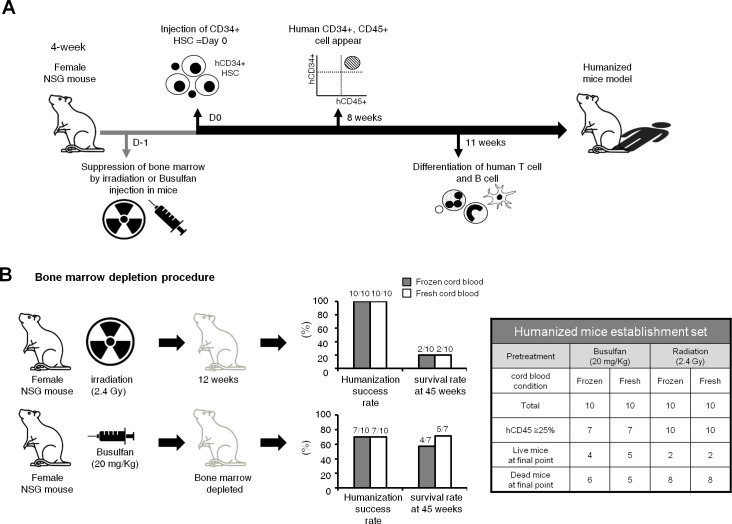Figure 1.
Scheme for the generation of the humanized mouse model. (A) 4-week female NOD-scid IL2rγnull (NSG) mice were prepared to generate humanized mice. Humanized mice were generated following myeloablation and transplantation of hCD34+ hematopoietic stem cells (HSCs). NSG mice were irradiated or injected with busulfan to suppress bone marrow function. Then, hCD34+ HSCs, isolated from human umbilical cord blood, were injected to myeloablated mice via the tail vein within 24 hours of myeloablation. 8 weeks after the injection of hCD34+ HSCs, hCD45+ cells started to appear, and differentiation of human T and B cells occurred at 11 weeks. (B) In order to optimize the humanization process in terms of efficiency and durability, irradiation versus busulfan were compared as myeloablative methods, and fresh versus frozen status of cord blood were compared as the source of human HSCs. Although the humanization success rates were higher in the irradiation group than in the busulfan group, the 45-week survival rate was higher in the busulfan group (64.3%, 9/14 humanized mice) than in the irradiation group (20%, 4/20 humanized mice). The fresh versus frozen status did not significantly affect the humanization success rate or the 45-week survival rate.

